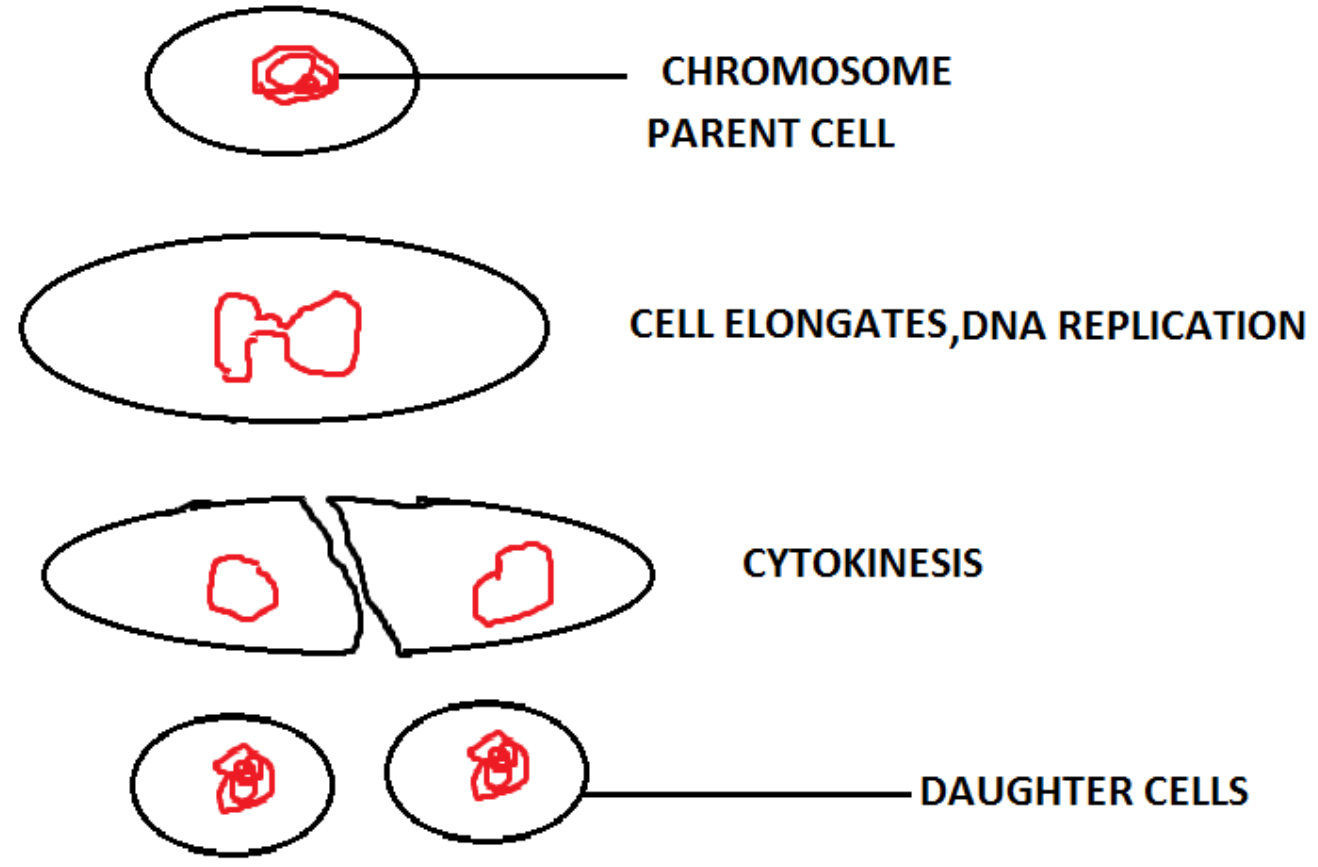
Which of the following can show somatogenic reproduction?
A) Paramecium
B) Amoeba
C) Hydra
D) All of the above
Answer
470.1k+ views
Hint: In somatogenic reproduction, the new organisms are formed from the somatic or the body parts of the parent organism. It is also known as asexual reproduction.
Complete Answer:
- In living organisms, there are two kinds of cells present- the somatic cells or the body cells and the reproductive or the germ cells.
- The germ cells include the sperm and egg whereas the somatic cells can be any type of body cells. The germ cells are responsible for sexual reproduction whereas in the somatic cells, division takes place asexually.
The asexual reproduction takes place by
1) Budding- In this form, the new individual develops from some generative anatomical point of the parent. The initial protuberance is developed at the cytoplasm which forms a bud like structure that develops into a new organism.
Eg hydra.

2) Binary fission- Amoeba reproduces through binary fission. In this the organism itself divides into two daughter cells which are genetically similar. Paramecium also shows asexual reproduction through binary fission.

Fig: Binary fission
Other kinds of sexual reproduction can take place through vegetative propagation, spore formation, fragmentation.
Thus the correct answer is (D) All of the above.
Note: Somatic cells divide by mitosis. It gives birth to identical copies of progeny. Only the somatic parts of the parents are involved. Paramecium undergoes both sexual and asexual reproduction. It undergoes binary fission only under favourable conditions.
Complete Answer:
- In living organisms, there are two kinds of cells present- the somatic cells or the body cells and the reproductive or the germ cells.
- The germ cells include the sperm and egg whereas the somatic cells can be any type of body cells. The germ cells are responsible for sexual reproduction whereas in the somatic cells, division takes place asexually.
The asexual reproduction takes place by
1) Budding- In this form, the new individual develops from some generative anatomical point of the parent. The initial protuberance is developed at the cytoplasm which forms a bud like structure that develops into a new organism.
Eg hydra.

2) Binary fission- Amoeba reproduces through binary fission. In this the organism itself divides into two daughter cells which are genetically similar. Paramecium also shows asexual reproduction through binary fission.

Fig: Binary fission
Other kinds of sexual reproduction can take place through vegetative propagation, spore formation, fragmentation.
Thus the correct answer is (D) All of the above.
Note: Somatic cells divide by mitosis. It gives birth to identical copies of progeny. Only the somatic parts of the parents are involved. Paramecium undergoes both sexual and asexual reproduction. It undergoes binary fission only under favourable conditions.
Recently Updated Pages
Master Class 12 Business Studies: Engaging Questions & Answers for Success

Master Class 12 English: Engaging Questions & Answers for Success

Master Class 12 Economics: Engaging Questions & Answers for Success

Master Class 12 Chemistry: Engaging Questions & Answers for Success

Master Class 12 Social Science: Engaging Questions & Answers for Success

Class 12 Question and Answer - Your Ultimate Solutions Guide

Trending doubts
List some examples of Rabi and Kharif crops class 8 biology CBSE

How do you solve the equation x2 + 4x 21 class 8 maths CBSE

Distinguish between SouthWest and NorthEast monsoo class 8 social science CBSE

Write a letter to the Tehsildar MRO explaining the class 8 english CBSE

The strategy of Divide and rule was adopted by A Lord class 8 social science CBSE

The fourth proportional to 5 8 15 is A 24 B 18 C 20 class 8 maths CBSE




